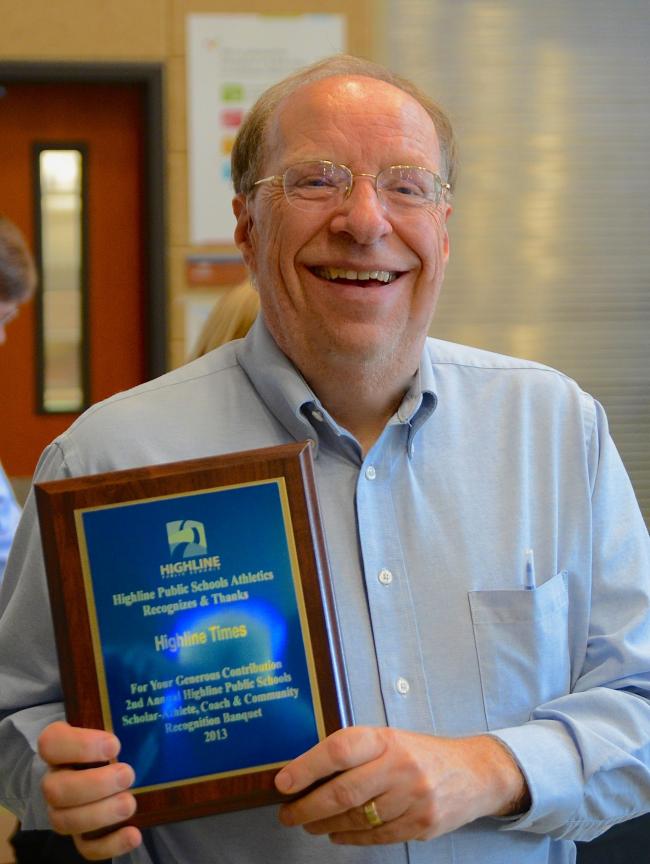Remember high school?
Tue, 06/23/2015
By Eric Mathison
Maybe you were like me. Part of the majority in the middle. Got OK grades. Didn’t cause trouble. Flew beneath the radar.
Looking back, this small schools concept at Highline Public Schools’ Evergreen and Tyee High campuses sounds good. I admit I felt overlooked in a comprehensive high school where I moved from classroom to classroom with different teachers and different classmates.
In small schools, the students are in separate themed academies with the same classmates and set of teachers. The goal is to have students known well individually by their fellow students and especially by their teachers.
That sounds like something that I would have welcomed during those perplexing adolescent years.
On the other hand, luckily, I had the resources that enabled me to navigate those years relatively unscathed.
I came from a family where there was never any question I would go on to college. I found a couple of fellow misfits to befriend at Highline High and even expanded my social circle to a club outside school that became the main focus of my attention.
Another lifeline was elective courses. When we get together for our 50th class reunion in August at Cedarbrook Lodge, I doubt we are going to reminisce about Miss Calvin’s English class or Mr. Bonney’s math class.
It’s the electives, clubs and sports teams you remember. That’s what kept some marginal kids coming to school. For me, it was debate and journalism.
It’s a major criticism of small schools. Opponents say they are not big or flexible enough for varied electives and clubs that appeal to a wide range of interests.
Or one of the academies gets the cool classes and clubs that exclude other students on the same campus.
When Tyee split up, Global Connections High got the highly regarded Tyee band. The band was subsequently invited to Washington D.C. to play at President Obama’s Inaugural festivities.
That’s like dividing the UW up and giving the medical school and Husky football team to one school.
Small school proponents hotly dispute that their students are missing out.
The SeaTac YMCA down the street offers activities to all Tyee students. Evergreen has a campus-wide honor society and the Wolverine athletic teams.
Around 2000, Highline administrators became alarmed with the district’s graduation rates. Districts with similar diverse student enrollment were having some success with education’s new Big Idea—small learning academies. The Bill and Melinda Gates Foundation, a big grant provider, was also on board.
Tyee started with three schools in 2005. They are down to two now. Evergreen split into three schools a year later. Mt. Rainier High with its International Baccalaureate program and Highline High have stayed with the comprehensive big-school model.
Now a decade into the experiment, the district’s graduation rates are not what had been hoped for.
However, Evergreen’s Health Sciences and Human Services High School (HS3) and Technology, Engineering and Communications High School (TEC) are beating out the big schools in graduating students.
The school board hosted a community meeting at Evergreen in May. Board members asked what kind of high school experience does the community want students to have.
Worried by the news that with the retirement of star Global Connections principal Rick Harwood, the two Tyee schools would share one principal in the fall, Global Connection students and staff traveled to White Center to protest. They suspected the news meant the board had already decided to dismantle the small schools. Board president Bernie Dorsey denied the assumption.
But that touches on another argument offered by small school critics. With classroom dollars tight, it’s expensive to pay two or more principals on the same campus more than $100,000 a year when each is responsible for less than 500 students.
The large Global Connections contingent was unanimous—they love their school.
There were fewer participants among the host Evergreen students, staff and community members.
Some Evergreen speakers attributed that to people not feeling Evergreen is a unified community now that the students are split into separate schools.
Small or big? SeaTac parent Cheryl Forbes might have come closest to a good answer. Her son thrives on activity and excitement—a big comprehensive high school is best for him, she explained. Meanwhile her daughter is quieter, shyer—she would do better in a small school with more personal attention.
A strength of Highline Public Schools is its variety of high school learning environments, including Big Picture, Raisbeck Aviation, Choice Academy and New Start. Highline administrators understand different kids learn differently.
There may be tweaks for economics, boundaries, expanded choices, etc. But I suspect at the end of this high school evaluation process, Highline will retain a mix of big and small.
Eric Mathison is a former editor of the Highline Times.


